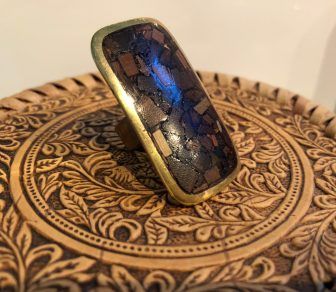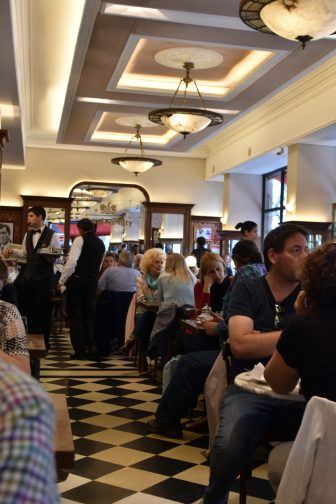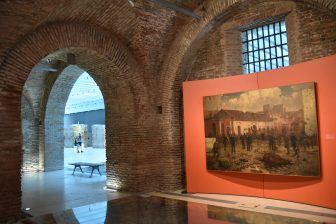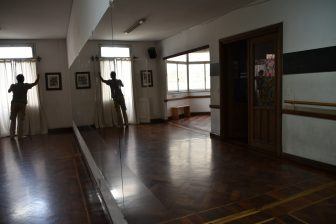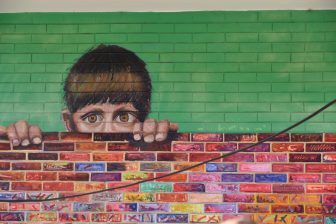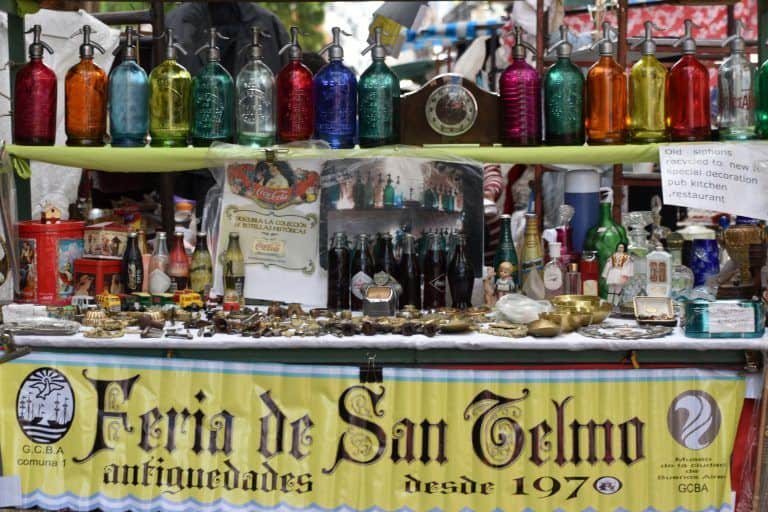
[ Mar.2018 ] On Sunday in Buenos Aires in Argentina, we went to the antique market in San Telmo area which we had also been to last time.
We took a taxi from Recoleta area and we felt nostalgic when we went through the huge Ave. 9 de Julio where we had our hotel last time and saw the Obelisk and Colon Theatre among other things.
It was quite a long journey, but the taxi fare was only 150 pesos (£5.30, €6, $7.40).
Learning from this, we used a taxi many times after that.
The only thing was that our guide told us that it would be better to choose the taxi with the company name on top of their roof.
One time when we chose the one without the name plate on top by mistake, the driver did not know the way well and we had a bit of trouble.
The taxis in Buenos Aires are noticeable with the colours in yellow and black and we learned afterwards that there are as many as 40,000 taxis in the city, so it is easy to catch one.
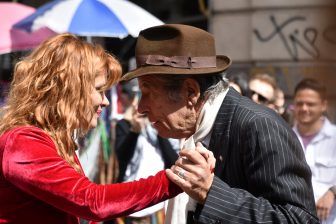
We were lucky enough to see a couple dancing the Tango on the street next to the square.
They were quite elderly and I guess they are famous around here.
They probably dance for the tourists but in any case, it is wonderful that they can enjoy dancing whatever age they are.
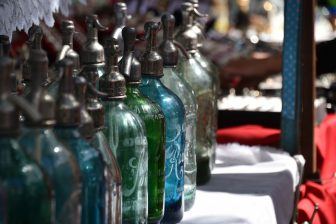
I bought a few things here and there and at one time I noticed a stall selling quite stylish rings, so we stopped there.
Surprisingly, the vendor was a Japanese person.
His name was Nobuhiro and he came from Osaka in Japan and when he was in Japan, he used to drive trucks.
He
He never learned how to make accessories, but started making them “just to live”.
I found his designs very stylish, using metal materials such as copper.
Probably that is his natural ability.
He was a really free-spirited person, saying “Anyone can do anything once he or she starts trying”.
I bought a couple of his pieces, one of which was a ring with a rectangular shape and small wooden chips.
He was saying “It was a hard work to make this and I would not do it again”.
It just so happened that another customer who came along to this stall was a local man who spoke fluent Japanese.
Apparently he works for a Japanese company in Mexico and he is planning to go to Japan in June to see his Japanese girlfriend in Gunma prefecture.
So we made up a small instant Japanese community there unexpectedly for a short while.
After that, we kept walking and at last we came out to Plaza de Mayo and by then we were quite tired and hungry.
So we went into an inviting cafe nearby.
It was called ‘London City”.
It seemed a long standing café and on the wall there was a plate explaining about the place.
According to that, London City café was opened on the 28th September 1954 on the ground floor of a British-funded shop called Gath & Chaves.
Many politicians, journalists and artists gathered here and among them was an internationally renowned Argentinian writer, Julio Cortazar.
Apparently he sat here and wrote one of his masterpieces called “Los Premios (The Winners)” and this café appears in this book.
Here, we ate a dish called “Milanesa” which is a common menu item in this country and it is fairly similar to Cotoletta Milanese.
It was good.

